
The Enchanting Atchafalaya Basin: America's Largest River Swamp
Discover the Atchafalaya Basin: America's largest river swamp, where lush landscapes, diverse wildlife, and rich Cajun culture converge in the heart of Louisiana.
Welcome to the Atchafalaya Basin, a vast and mysterious river swamp located in the heart of Louisiana. Covering over a million acres, this natural wonder is the largest wetland and swamp in the United States. The Atchafalaya Basin offers a unique blend of dense forests, winding waterways, and diverse wildlife that will captivate nature enthusiasts and adventurers alike. As you explore the Basin, you'll encounter a rich tapestry of ecosystems ranging from cypress-tupelo swamps to hardwood forests. The area is home to a variety of bird species, including the majestic bald eagle, as well as alligators, otters, and an abundance of fish. Whether you choose to navigate the waterways by kayak, take a guided swamp tour, or hike along the trails, the Basin provides countless opportunities to connect with nature and experience its untamed beauty. The Atchafalaya Basin is also steeped in cultural history. It has been a vital resource for Native American tribes, early settlers, and the Cajun communities that call this region home. Visitors can immerse themselves in local traditions by enjoying Cajun music, sampling authentic cuisine, and learning about the area's history at nearby cultural centers. The Basin's blend of natural splendor and cultural heritage makes it a must-visit destination for anyone looking to experience the true essence of Louisiana.
Local tips in Atchafalaya Basin
- Bring insect repellent to protect yourself from mosquitoes, especially during the warmer months.
- Wear waterproof shoes or boots, as the terrain can be muddy and wet.
- Consider taking a guided swamp tour for a deeper understanding of the local flora and fauna.
- Visit during the spring or fall for milder weather and fewer bugs.
- Don't forget your binoculars for bird watching and spotting other wildlife.
- Respect local customs and traditions, especially when visiting Cajun communities.
The Enchanting Atchafalaya Basin: America's Largest River Swamp
Welcome to the Atchafalaya Basin, a vast and mysterious river swamp located in the heart of Louisiana. Covering over a million acres, this natural wonder is the largest wetland and swamp in the United States. The Atchafalaya Basin offers a unique blend of dense forests, winding waterways, and diverse wildlife that will captivate nature enthusiasts and adventurers alike. As you explore the Basin, you'll encounter a rich tapestry of ecosystems ranging from cypress-tupelo swamps to hardwood forests. The area is home to a variety of bird species, including the majestic bald eagle, as well as alligators, otters, and an abundance of fish. Whether you choose to navigate the waterways by kayak, take a guided swamp tour, or hike along the trails, the Basin provides countless opportunities to connect with nature and experience its untamed beauty. The Atchafalaya Basin is also steeped in cultural history. It has been a vital resource for Native American tribes, early settlers, and the Cajun communities that call this region home. Visitors can immerse themselves in local traditions by enjoying Cajun music, sampling authentic cuisine, and learning about the area's history at nearby cultural centers. The Basin's blend of natural splendor and cultural heritage makes it a must-visit destination for anyone looking to experience the true essence of Louisiana.
When is the best time to go to Atchafalaya Basin?
Iconic landmarks you can’t miss
Atchafalaya Basin Landing Airboat Swamp Tours
Discover the enchanting beauty of the Atchafalaya Basin through thrilling airboat swamp tours, exploring wildlife and breathtaking landscapes.

McGee's Louisiana Swamp & Airboat Tours
Discover the enchanting bayou life at McGee's Louisiana Swamp & Airboat Tours, where adventure and nature come together.

Atchafalaya National Wildlife Refuge
Discover the natural wonders of Atchafalaya National Wildlife Refuge, a wildlife haven in Louisiana perfect for nature lovers and outdoor enthusiasts.

Prehistoric Park
Explore Prehistoric Park in Henderson, LA - a captivating children's amusement center featuring life-sized dinosaur replicas and interactive exhibits for the whole family.

Longfellow-Evangeline State Historic Site
Discover the Acadian heritage and natural beauty at Longfellow-Evangeline State Historic Site in Louisiana, a captivating journey into the past.
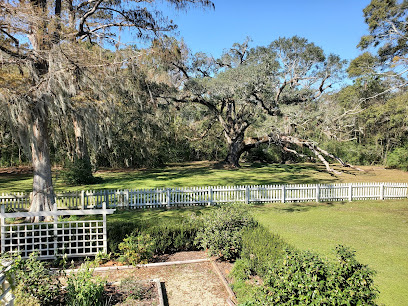
Shadows-on-the-Teche
Explore Shadows-on-the-Teche, a historical museum in New Iberia, LA, revealing the captivating stories of the Teche River and its cultural significance.

Port Hudson State Historic Site
Explore the historic significance and natural beauty of Port Hudson State Historic Site, a must-visit for history buffs and nature lovers in Louisiana.

Plaquemine Lock State Historic Site
Explore the historic Plaquemine Lock State Historic Site, a key landmark along the Mississippi River's journey through Louisiana, rich in heritage and scenic beauty.
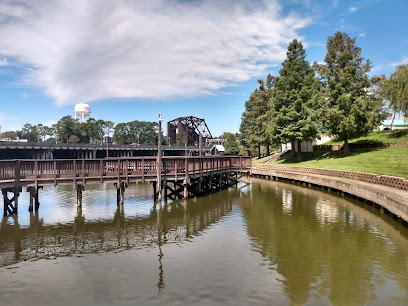
E.D. White Historic Site
Explore the E.D. White Historic Site, where Louisiana's rich judicial history comes alive through engaging exhibits and beautiful architecture.

The Atchafalaya Experience
Explore the breathtaking Atchafalaya Basin with guided boat tours, uncovering Louisiana's stunning wildlife and rich cultural heritage.

Atchafalaya Welcome Center
Discover the Atchafalaya Welcome Center, where Louisiana's natural beauty meets rich cultural heritage, just waiting to be explored.

Atchafalaya boat landing
Discover the serene beauty of Atchafalaya Boat Landing, a premier destination for nature lovers and outdoor enthusiasts in Louisiana's enchanting wetlands.
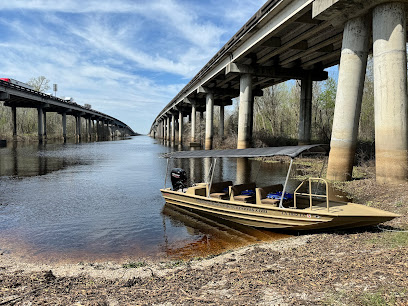
Atchafalaya National Heritage Area - Bayou Teche
Explore the breathtaking Atchafalaya National Heritage Area - Bayou Teche, a wildlife refuge rich in biodiversity and cultural heritage.

The Red Stick Sculpture
Explore Baton Rouge's iconic Red Stick Sculpture, a vibrant symbol of the city's heritage and a must-see for every traveler.
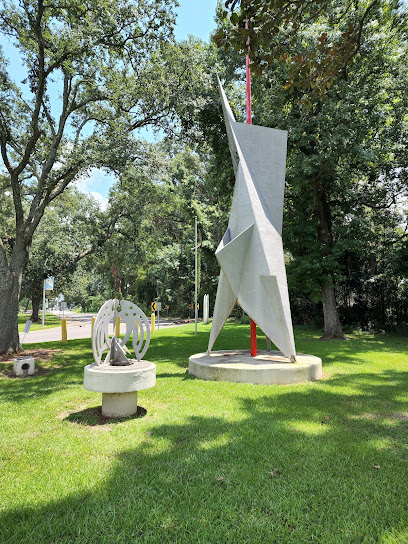
Hebe Statue
Explore the enchanting Hebe Statue in Baton Rouge, a stunning historical landmark symbolizing beauty and youth, surrounded by lush landscapes.

Unmissable attractions to see
Jungle Gardens
Explore the lush landscapes and diverse wildlife of Jungle Gardens, a stunning botanical paradise on Avery Island, Louisiana.

Zoosiana
Experience the magic of Zoosiana, a premier zoo in Broussard, LA, where wildlife encounters and family fun come together in a beautiful setting.
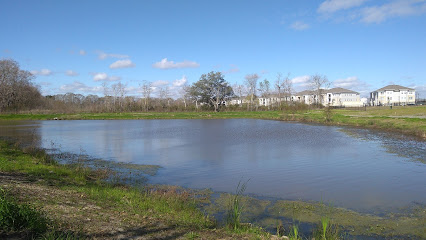
Louisiana's Old State Capitol
Explore the historic Louisiana's Old State Capitol, a stunning Gothic Revival masterpiece and a treasure trove of Louisiana's political history.

Vermilionville Historic Village
Explore the rich Cajun and Creole heritage at Vermilionville Historic Village, a vibrant cultural site in Lafayette, Louisiana, featuring live music, dance, and traditional cuisine.

LARC's Acadian Village
Experience the rich Acadian heritage at LARC's Acadian Village, a captivating cultural attraction in Lafayette, Louisiana, showcasing authentic architecture and traditions.

Atchafalaya Basin Landing Airboat Swamp Tours
Experience the thrill of Atchafalaya Basin with airboat tours through Louisiana's magnificent swamp, witnessing wildlife and nature's beauty.

McGee's Louisiana Swamp & Airboat Tours
Experience the thrill of airboat rides and discover the beauty of Louisiana's wetlands at McGee's Louisiana Swamp & Airboat Tours.

Cajun Country Swamp Tours
Discover the hidden gems of Louisiana's wetlands with Cajun Country Swamp Tours, where adventure meets the beauty of nature.

Atchafalaya National Wildlife Refuge
Explore the breathtaking Atchafalaya National Wildlife Refuge, where diverse wildlife and serene landscapes await your discovery in Louisiana.

Louisiana Swamp Tours
Explore the enchanting wetlands of Louisiana on unforgettable swamp tours, where nature, wildlife, and local culture intertwine.

Prehistoric Park
Experience the thrill of the prehistoric world at Prehistoric Park, where family fun meets educational adventure in the heart of Louisiana.

Lake Fausse Pointe State Park
Experience the natural beauty and outdoor adventure at Lake Fausse Pointe State Park, a serene escape in Louisiana's stunning landscapes.

Children's Museum of Acadiana
Explore hands-on exhibits and interactive fun at the Children's Museum of Acadiana, where learning meets play for children and families.

Longfellow-Evangeline State Historic Site
Explore the captivating history of the Acadians at Longfellow-Evangeline State Historic Site, where literature meets Louisiana's rich cultural heritage.
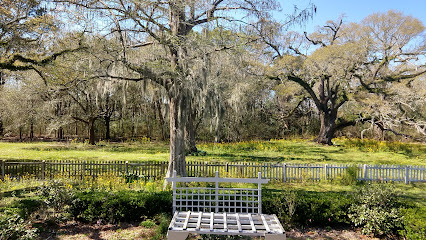
Acadiana Park Nature Station
Experience the natural beauty and wildlife of Acadiana Park Nature Station in Lafayette, Louisiana—a perfect destination for nature lovers and families.

Essential places to dine
Cou-yon's Cajun Bar-B-Q
Discover authentic Southern barbecue and seafood at Cou-yon's Cajun Bar-B-Q in Port Allen—where flavor meets tradition.
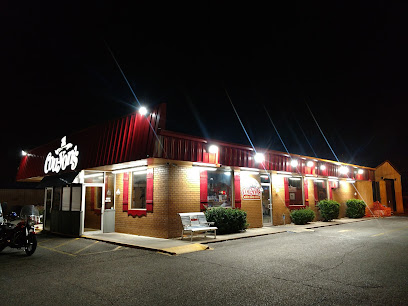
Cracker Barrel Old Country Store
Savor traditional Southern cuisine and shop for unique gifts at Cracker Barrel Old Country Store in Lafayette - where comfort meets charm.
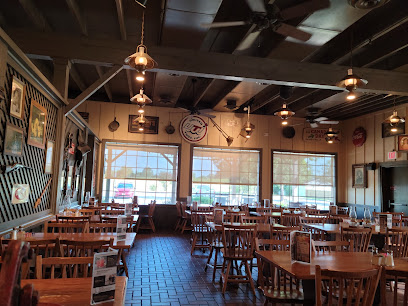
Atchafalaya
Experience authentic Louisiana cuisine at Atchafalaya, where delicious food meets vibrant culture in New Orleans.

Chicken On The Bayou & Boudin Shop
Experience authentic Cajun cuisine at Chicken On The Bayou & Boudin Shop in Breaux Bridge – where every bite tells a story.

Walk-On's Sports Bistreaux - Lafayette Restaurant
Savor Louisiana flavors at Walk-On's Sports Bistreaux – where great food meets exhilarating sports entertainment.
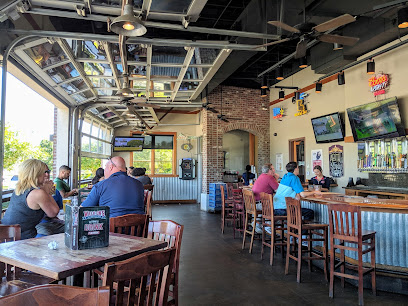
Crazy Bout Crawfish
Experience authentic Louisiana seafood at Crazy Bout Crawfish in Breaux Bridge - where every dish tells a story.

T-Coon's Restaurant
Experience authentic Cajun cuisine at T-Coon's Restaurant in Lafayette - where every meal tells a story of Southern tradition.

Saltgrass Steak House
Discover the rich flavors of American cuisine at Saltgrass Steak House in Lafayette - home of mouth-watering steaks and delightful seafood dishes.

Pat's Fisherman's Wharf Restaurant
Discover authentic Cajun seafood at Pat's Fisherman's Wharf Restaurant in Henderson, Louisiana – where every bite tells a story.

Ruffino's On The River
Experience exquisite Italian and seafood dining at Ruffino's On The River in Lafayette – where culinary excellence meets stunning riverside views.

Half Shell Oyster House
Discover the best seafood at Half Shell Oyster House in Lafayette – where fresh oysters meet Southern charm.

Walk-On's Sports Bistreaux - Brusly Restaurant
Savor Louisiana-inspired cuisine at Walk-On's Sports Bistreaux in Brusly while enjoying your favorite sports events in a lively atmosphere.

LT's Seafood & Steakhouse
Discover exceptional Cajun cuisine at LT's Seafood & Steakhouse—where fresh seafood meets perfectly grilled steaks in Broussard.

Little Capital
Discover the delightful flavors and warm hospitality at Little Capital, your must-visit rest stop in Breaux Bridge, Louisiana.

Roberto's River Road Restaurant
Experience Southern hospitality at Roberto's River Road Restaurant; indulge in fresh seafood while enjoying stunning riverside views.

Markets, malls and hidden boutiques
Great American RV SuperStores- Breaux Bridge
Discover the ultimate RV experience at Great American RV SuperStores in Breaux Bridge, featuring a wide selection of recreational vehicles and essential supplies.
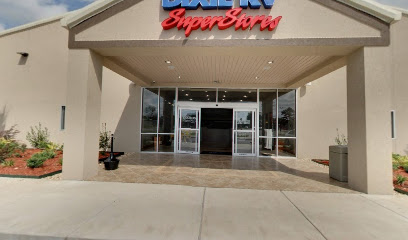
Walmart Supercenter
Discover the convenience and affordability of Walmart Supercenter in Breaux Bridge, your ultimate shopping destination for all essentials.

McGee's Louisiana Swamp & Airboat Tours
Discover Louisiana's wild side at McGee's Swamp Tours, where adventure meets nature in the heart of the bayou.

Atchafalaya National Wildlife Refuge
Explore the breathtaking Atchafalaya National Wildlife Refuge, a natural haven teeming with diverse wildlife and stunning landscapes in the heart of Louisiana.

The Gypsy Market
Explore The Gypsy Market: your destination for unique gifts and local crafts in Lafayette, Louisiana.
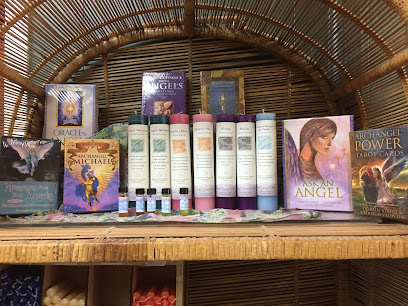
The Pink Paisley
Explore The Pink Paisley for unique gifts and local artistry in Lafayette, Louisiana – a treasure trove of Southern charm and creativity.

Time Warp Boutique
Discover vintage treasures and unique gifts at Time Warp Boutique in Baton Rouge, where nostalgia meets creativity in a charming shopping experience.
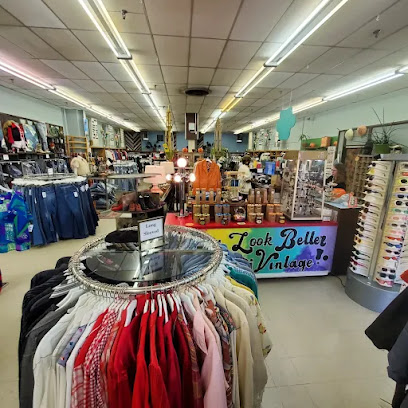
Lone Wolf Gatherings (located in the northgate mall)
Explore the enchanting world of spirituality at Lone Wolf Gatherings in Lafayette, Louisiana, your go-to metaphysical supply store for spiritual tools and guidance.
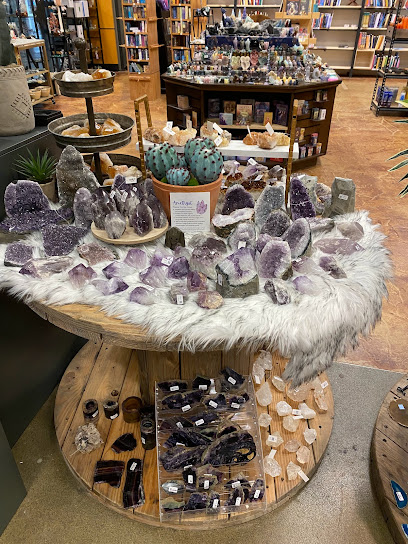
A-Net's Bridal Boutique
Discover the perfect wedding dress and unparalleled service at A-Net's Bridal Boutique in Downtown Lafayette, where dreams come true for every bride.

Atchafalaya Basin
Explore Atchafalaya Basin, Louisiana's largest wetland, where vibrant ecosystems and rich cultural heritage come together for an unforgettable adventure.

DISTRICT MERCANTILE
Explore District Mercantile, an antique and general store in St. Francisville, where vintage finds and local treasures await every traveler.
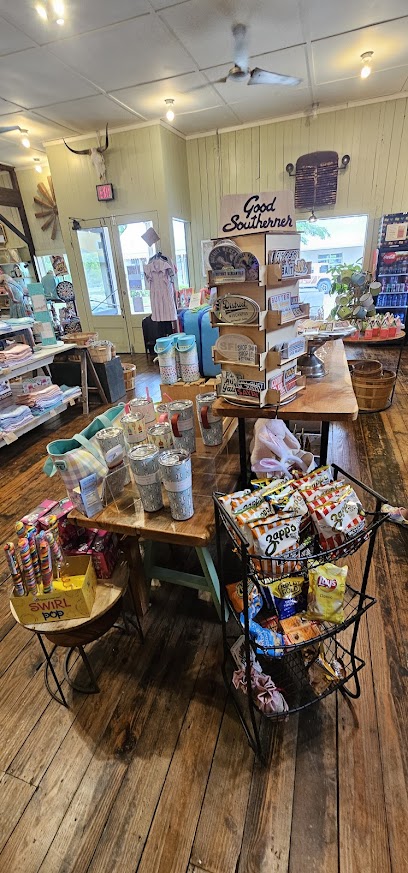
West Feliciana Antique Mall
Explore the West Feliciana Antique Mall in St. Francisville for unique vintage finds and local treasures in a charming setting.

Sage Hill
Explore Sage Hill in St. Francisville, a delightful gift shop with unique clothing, jewelry, toys, and home decor that captures Louisiana's charm.

Persnickety Unique Gifts
Explore Persnickety Unique Gifts in Zachary, LA - your destination for unique souvenirs, handcrafted treasures, and local artistry.

Tobacco Plant
Explore the Tobacco Plant in Breaux Bridge for premium cigars, exceptional customer service, and a welcoming atmosphere steeped in local charm.

Essential bars & hidden hideouts
Walk-On's Sports Bistreaux - Lafayette Restaurant
Experience the best of Southern cuisine and sports entertainment at Walk-On's Sports Bistreaux in Lafayette, LA.

CT-USA Restaurant & Market
Experience the vibrant flavors of Cajun cuisine at CT-USA Restaurant & Market, a culinary gem in Henderson, Louisiana.

The Greenroom
Discover the eclectic charm of The Greenroom, a unique bar and live music venue in Downtown Lafayette, perfect for art lovers and nightlife enthusiasts.
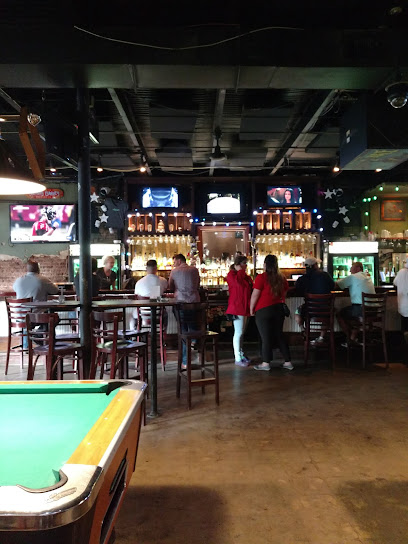
POUR Restaurant & Bar
Experience the best of American cuisine at POUR Restaurant & Bar in Lafayette, where local flavors meet modern dining in a vibrant atmosphere.

The Tap Room
Unwind at The Tap Room, Lafayette's premier sports bar, offering delicious American cuisine and a lively atmosphere for all visitors.

Midcity Restaurant + Bar
Experience the best of Louisiana cuisine at Midcity Restaurant + Bar, where barbecue, seafood, and cocktails come together in a vibrant setting.
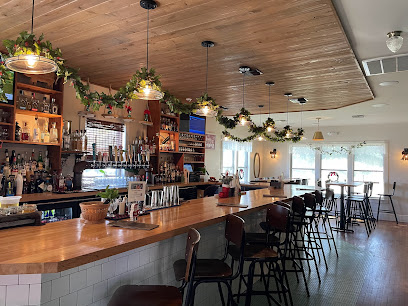
The Bulldog
Discover The Bulldog in Lafayette, where a unique blend of pub charm and pool hall excitement awaits every visitor.

White Tails Sports Bar And Grill
Experience the vibrant flavors of Louisiana at White Tails Sports Bar And Grill, where delicious food meets an inviting atmosphere.
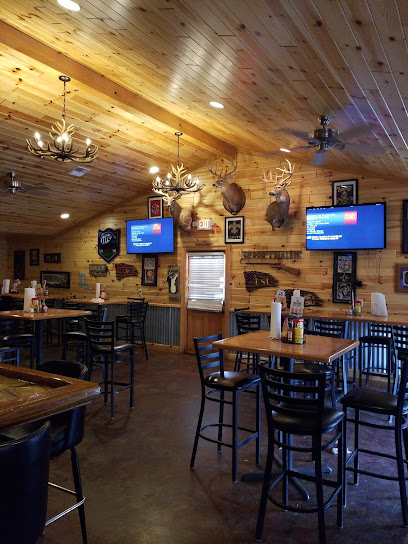
The Grouse Room
Experience the vibrant atmosphere of The Grouse Room, a premier bar & grill in Lafayette, featuring live music and a delicious Southern-inspired menu.

Corner Bar
Experience the vibrant nightlife of Lafayette at Corner Bar, where great drinks and local culture come together in a lively atmosphere.

Beer Belly's Bar & Grill
Discover the lively atmosphere of Beer Belly's Bar & Grill, where delicious grilled delights and cold beer await you in Plaquemine, Louisiana.

Bolt
Discover the heart of Lafayette's nightlife at Bolt, a lively gay bar with dancing, great drinks, and a welcoming atmosphere for all.

Legends Pub
Discover the vibrant flavors of Louisiana at Legends Pub, a lively grill and bar in Lafayette, perfect for food lovers and nightlife enthusiasts alike.

Whiskey & Vine
Explore Whiskey & Vine in Lafayette, LA - where delicious cuisine, fine wines, and vibrant live music blend to create an unforgettable experience.

Legends Pinhook
Experience Lafayette's vibrant nightlife at Legends Pinhook, where friendly vibes and diverse drinks await you in the heart of Louisiana.
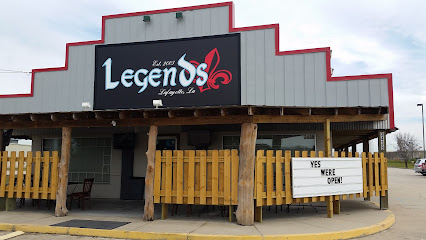
Local Phrases about Atchafalaya Basin
-
- HelloBonjour
[bon-zhoor] - GoodbyeAu revoir
[oh re-vwah] - YesOui
[wee] - NoNon
[nohn] - Please/You're welcomeS'il vous plaît
[seel voo pleh] - Thank youMerci
[mehr-see] - Excuse me/SorryPardon
[pahr-dohn] - How are you?Comment ça va?
[koh-mohn sah vah] - Fine. And you?Bien. Et vous?
[byen. ay voo] - Do you speak English?Parlez-vous anglais?
[par-lay voo ahn-glay] - I don't understandJe ne comprends pas
[zher nuh kohm-prahn pah]
- HelloBonjour
-
- I'd like to see the menu, pleaseJe voudrais voir le menu, s'il vous plaît
[zher voo-dray vwahr luh meh-nyoo, seel voo pleh] - I don't eat meatJe ne mange pas de viande
[zher nuh mahnj pah duh vyand] - Cheers!Santé!
[sahn-tay] - I would like to pay, pleaseJe voudrais payer, s'il vous plaît
[zher voo-dray pay-ay, seel voo pleh]
- I'd like to see the menu, pleaseJe voudrais voir le menu, s'il vous plaît
-
- Help!Au secours!
[oh suh-koor] - Go away!Allez-vous en!
[ah-lay voo zahn] - Call the Police!Appelez la police!
[ah-puh-lay lah puh-leece] - Call a doctor!Appelez un médecin!
[ah-puh-lay uh meh-duh-sahn] - I'm lostJe suis perdu
[zher swee pair-doo] - I'm illJe suis malade
[zher swee mah-lahd]
- Help!Au secours!
-
- I'd like to buy...Je voudrais acheter...
[zher voo-dray zah-shey] - I'm just lookingJe regarde juste
[zher ruh-gahrd zhuhst] - How much is it?Combien ça coûte?
[kohm-byen sah koot] - That's too expensiveC'est trop cher
[say troh shehr] - Can you lower the price?Pouvez-vous baisser le prix?
[poo-veh voo bay-say luh pree]
- I'd like to buy...Je voudrais acheter...
-
- What time is it?Quelle heure est-il?
[kehl uhr ay-teel] - It's one o'clockIl est une heure
[eel ay un uhr] - Half past (10)Dix heures et demie
[dees uhr ay dehm-yee] - MorningMatin
[mah-tahn] - AfternoonAprès-midi
[ah-pray mee-dee] - EveningSoir
[swahr] - YesterdayHier
[yehr] - TodayAujourd'hui
[oh-zhoor dewee] - TomorrowDemain
[deh-mahn] - 1Un
[uhn] - 2Deux
[duh] - 3Trois
[twah] - 4Quatre
[kah-truh] - 5Cinq
[sank] - 6Six
[sees] - 7Sept
[sept] - 8Huit
[wheet] - 9Neuf
[nuhf] - 10Dix
[dees]
- What time is it?Quelle heure est-il?
-
- Where's a/the...?Où est...?
[oo ay...] - What's the address?Quelle est l'adresse?
[kehl ay lah-drehss] - Can you show me (on the map)?Pouvez-vous me montrer (sur la carte)?
[poo-veh voo muh mohn-tray (soor lah kart)] - When's the next (bus)?Quand est le prochain (bus)?
[kahnd ay luh proh-shang (buhs)] - A ticket (to ....)Un billet (pour ....)
[uhn bee-yay (poor)]
- Where's a/the...?Où est...?
History of Atchafalaya Basin
-
The Atchafalaya Basin, the largest river swamp in the United States, was formed over thousands of years through the meandering and shifting of the Mississippi River. It encompasses nearly one million acres of swamps, bayous, and backwater lakes. The basin’s formation is attributed to the natural processes of sediment deposition and erosion, which created the unique and rich ecosystem that exists today.
-
Long before European colonization, the Atchafalaya Basin was home to various indigenous tribes, including the Chitimacha, who thrived on the abundant resources of the swampy landscape. These early inhabitants developed intricate knowledge of the local flora and fauna, which they used for food, medicine, and shelter. When French settlers arrived in the 18th century, they formed alliances with these tribes, trading goods and sharing survival techniques.
-
In the mid-18th century, the Acadians, French-speaking settlers from Canada, were expelled by the British and many found refuge in Louisiana. They settled around and within the Atchafalaya Basin, establishing communities that would become the heart of Cajun culture. The Acadians adapted their European farming techniques to the swampy environment, developing unique methods for fishing, trapping, and rice farming, which are still practiced today.
-
The Atchafalaya Basin played a strategic role during the American Civil War. Its dense swamps and waterways provided hiding places for Confederate soldiers and were used as routes for smuggling supplies. The Union Army also recognized the strategic importance of the basin, leading to several skirmishes and military campaigns in the area. The remnants of Civil War fortifications and sunken ships can still be found throughout the basin.
-
One of the most significant events in the history of the Atchafalaya Basin was the Great Flood of 1927. This catastrophic flood was caused by the overflowing of the Mississippi River, which inundated much of the basin and surrounding regions. The flood led to massive displacement of communities and prompted the federal government to take action, resulting in the construction of the Atchafalaya Floodway System to control future flooding and manage water flow.
-
In the mid-20th century, the discovery of oil and natural gas in the Atchafalaya Basin brought significant economic changes. The oil boom led to the construction of infrastructure such as pipelines and drilling platforms, which altered the landscape and impacted the local environment. While the oil industry provided jobs and economic growth, it also raised concerns about environmental sustainability and the preservation of the basin’s unique ecosystem.
-
In response to the environmental challenges posed by industrial activities, a conservation movement emerged in the late 20th century to protect and preserve the Atchafalaya Basin. Efforts were made to restore natural habitats, reintroduce native species, and promote sustainable practices. Organizations and government agencies have worked together to balance economic interests with environmental stewardship, ensuring the long-term health of the basin’s ecosystem.
-
Today, the Atchafalaya Basin is a vibrant cultural hub, celebrated for its unique blend of Cajun and Creole heritage. The basin’s music, cuisine, and festivals attract visitors from around the world, offering a glimpse into the rich traditions that have been passed down through generations. The area is also a haven for outdoor enthusiasts, providing opportunities for fishing, boating, birdwatching, and experiencing the serene beauty of one of America’s most remarkable natural landscapes.
Atchafalaya Basin Essentials
-
The Atchafalaya Basin is located in south-central Louisiana. The nearest major airport is Louis Armstrong New Orleans International Airport (MSY), about 75 miles southeast of the basin. From the airport, you can rent a car or take a shuttle service to the basin. Another option is the Baton Rouge Metropolitan Airport (BTR), approximately 60 miles northwest. For those driving, Interstate 10 runs along the northern edge of the basin, making it accessible from both New Orleans and Baton Rouge.
-
The most convenient way to explore the Atchafalaya Basin is by car. Rental cars are available at both New Orleans and Baton Rouge airports. Once in the basin, you can join guided boat tours, which are a popular way to navigate the waterways and swamps. For those looking for a more adventurous experience, you can rent kayaks or canoes. Public transportation options are limited, so having a car is essential for getting around.
-
The official currency in the United States is the US Dollar (USD). Credit cards are widely accepted in most establishments, including gas stations, restaurants, and hotels. However, it is advisable to carry some cash, especially when visiting rural areas or small local shops. ATMs are available in nearby towns such as Breaux Bridge and Morgan City.
-
The Atchafalaya Basin is generally safe for tourists. However, standard precautions should always be taken. Avoid isolated areas after dark and keep an eye on your belongings, especially in crowded places. It's also important to be aware of natural hazards, such as alligators and snakes, when exploring the swamps. There are no specific high-crime areas targeting tourists, but it is always best to stay vigilant and aware of your surroundings.
-
In case of an emergency, dial 911 for immediate assistance. The nearest medical facilities are located in towns such as Breaux Bridge and Morgan City. It is recommended to have travel insurance that covers medical emergencies. For minor health issues, there are pharmacies in nearby towns where you can purchase over-the-counter medications.
-
Fashion: Do wear comfortable, weather-appropriate clothing and sturdy shoes, especially if you plan to hike or explore the swamps. Avoid wearing expensive jewelry or flashy accessories. Religion: Do respect local customs and traditions, although the area is not particularly religious. Public Transport: Do plan your transportation in advance, as public transport options are limited. Don't rely solely on taxis or rideshares. Greetings: Do greet people with a friendly 'hello' or 'howdy.' Southerners are known for their hospitality. Eating & Drinking: Do try local Cajun and Creole cuisine. Don't refuse food or drink offerings, as it is considered impolite.
-
To experience the Atchafalaya Basin like a local, consider visiting during the spring or fall when the weather is pleasant. Participate in a swamp tour led by a knowledgeable guide who can share insights about the local flora and fauna. Engage with locals at small-town festivals and events, such as the Breaux Bridge Crawfish Festival. Don't miss out on trying local dishes like crawfish étouffée and gumbo. For a unique experience, visit the Atchafalaya Welcome Center, where you can learn more about the history and ecology of the basin.
Trending Landmarks in Atchafalaya Basin
-
Atchafalaya Basin Landing Airboat Swamp Tours
-
McGee's Louisiana Swamp & Airboat Tours
-
Atchafalaya National Wildlife Refuge
-
Prehistoric Park
-
Longfellow-Evangeline State Historic Site
-
Shadows-on-the-Teche
-
Port Hudson State Historic Site
-
Plaquemine Lock State Historic Site
-
E.D. White Historic Site
-
The Atchafalaya Experience
-
Atchafalaya Welcome Center
-
Atchafalaya boat landing
-
Atchafalaya National Heritage Area - Bayou Teche
-
The Red Stick Sculpture
-
Hebe Statue
Nearby Cities to Atchafalaya Basin
-
Things To Do in Baton Rouge
-
Things To Do in Houma
-
Things To Do in Natchez
-
Things To Do in McComb
-
Things To Do in Lake Charles
-
Things To Do in New Orleans
-
Things To Do in Slidell
-
Things To Do in Port Arthur
-
Things To Do in Vicksburg
-
Things To Do in Beaumont
-
Things To Do in Monroe
-
Things To Do in Gulfport
-
Things To Do in Hattiesburg
-
Things To Do in Biloxi
-
Things To Do in Shreveport











